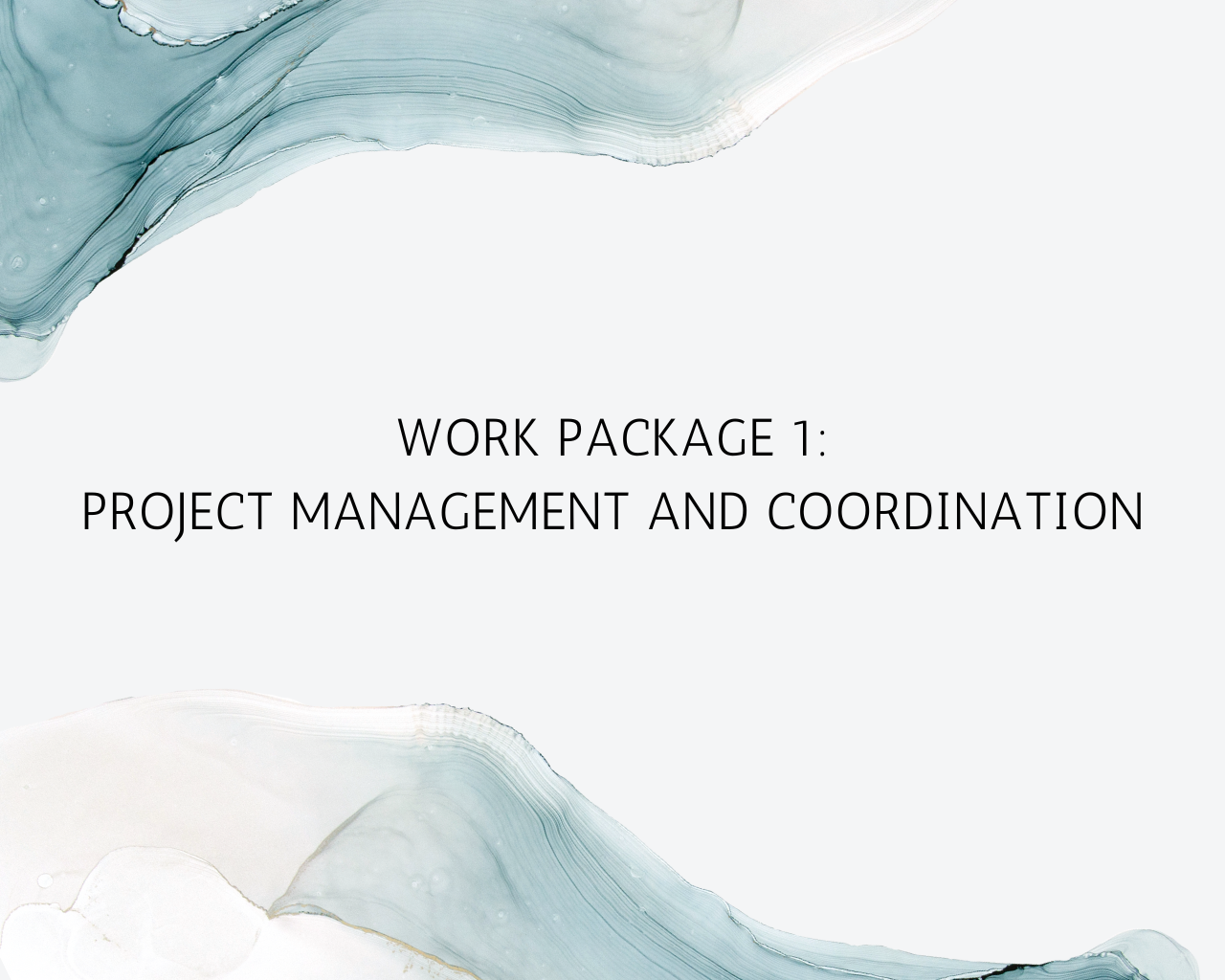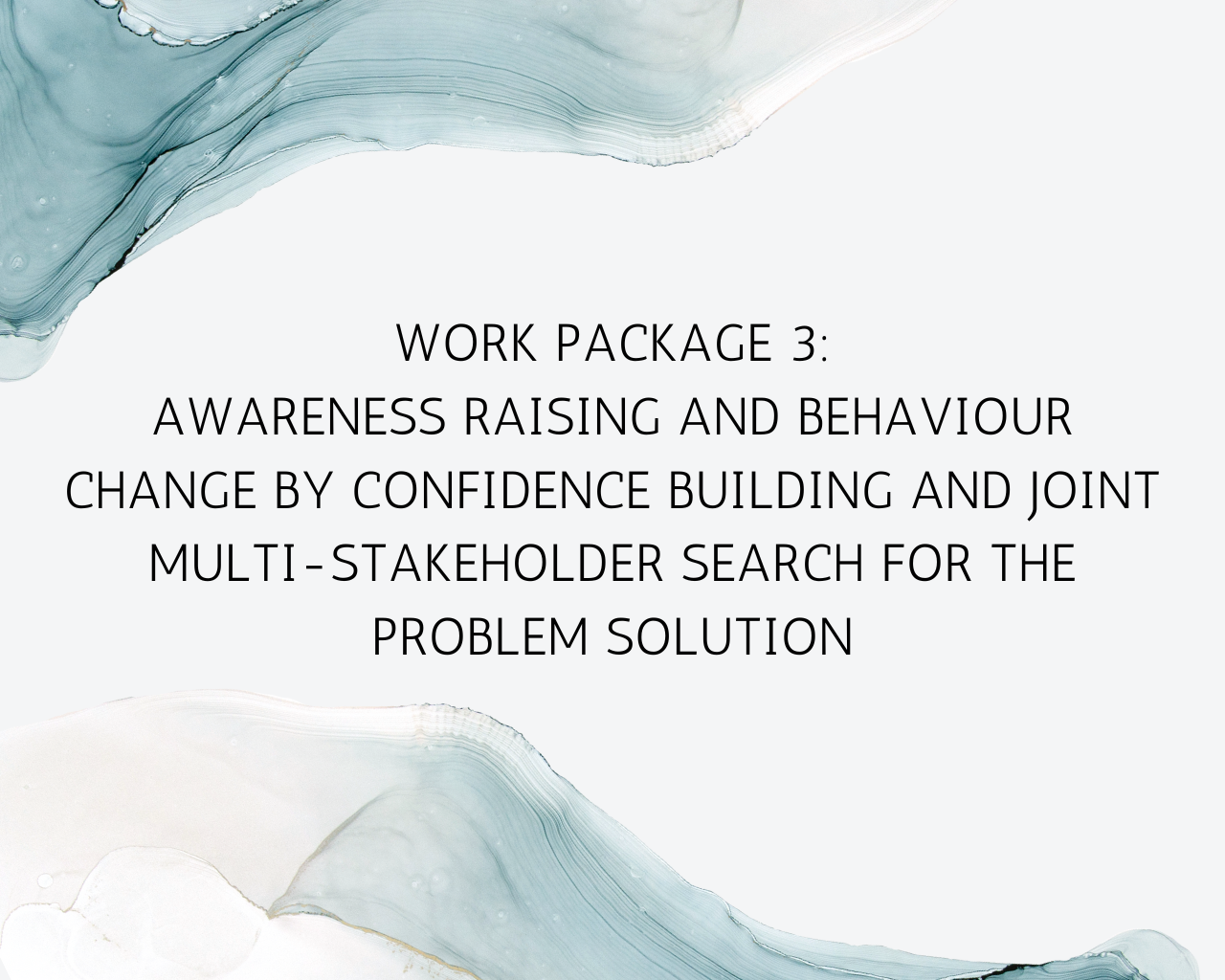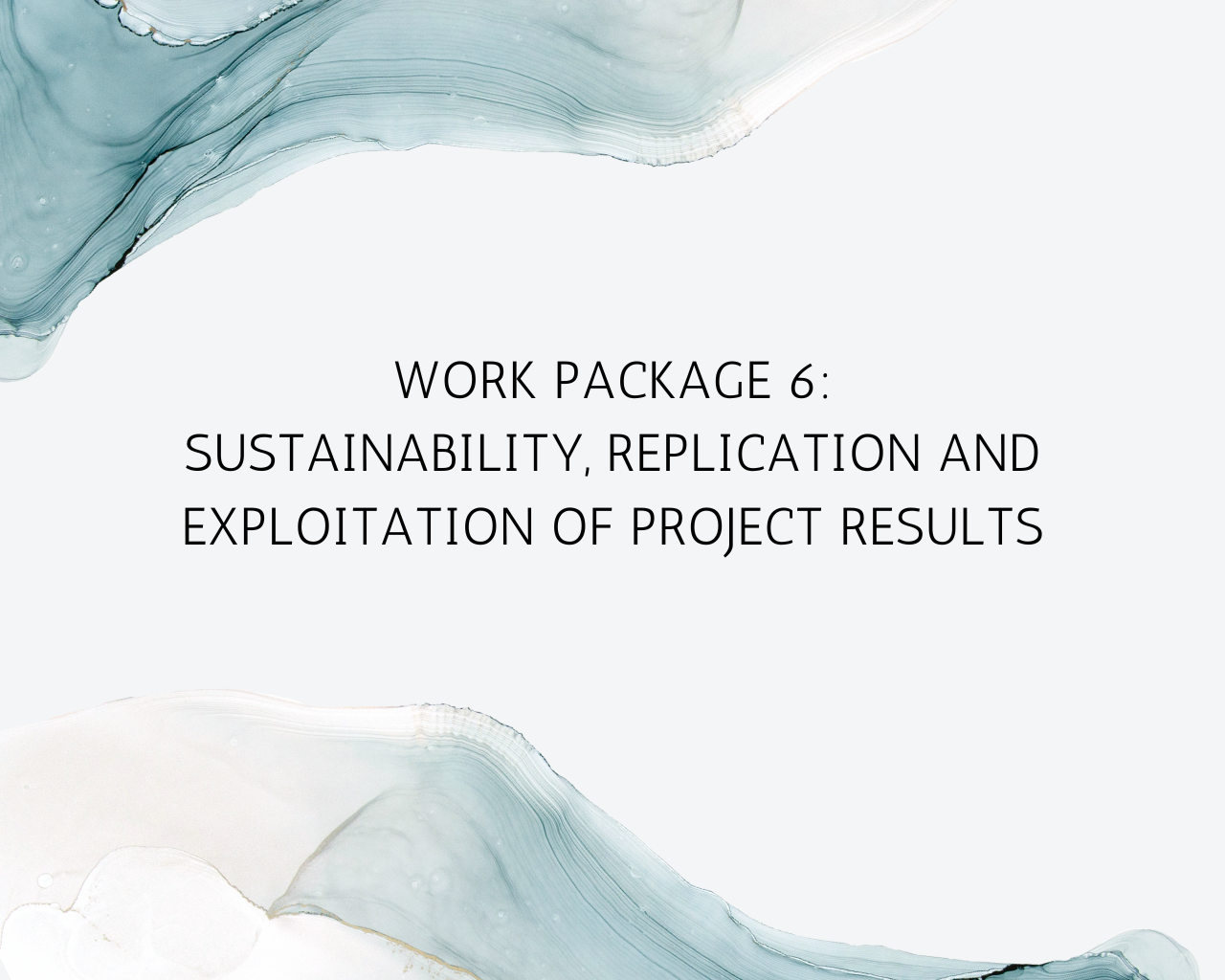Get Informed about Work Packages

![]() Project management and coordination
Project management and coordination
Objectives: To coordinate the whole project execution in terms of legal, contractual, financial, and administrative issues, to ensure the timely delivery of high-quality deliverables through the effective coordination of partners, robust technical and financial management, and a strict Quality Assurance (QA) for all project activities and associated deliverables.
▪ To maintain intact the project scope by ensuring agreement of all the project stakeholders and project team members.
▪ To coordinate the partners’ activities including effective and systematic communication and monitoring the project implementation.
▪ To undertake the risk assessment and application of risk mitigation measures.The Work plan of the project comprises 6 Work Packages (WPs), joined by the general logic and devoted to the project objectives. WP1 is devoted to coordination, management, monitoring and reporting. These activities are crucial for any project implementation. But they serve to some extent as means of reaching SO2 – developing the cooperation network. The kick-off meeting will establish effective project management boards, approve the Project Handbook which outlines the managerial approach for the project, approve the Project Work Plan (Work Breakdown, Schedule, and Costs), approve the means and ways of information distribution inside and outside the project frames, and approve rules of conduct.

Creation of an informational support, communication and cooperation platform of the Mercury-Free City community – LIFE e-HUB
Objectives: To collect in one informational hub, communicate to respective target groups, organize dissemination and management of the information in the field of mercury contamination, reduction of mercury usage and implementation of the EU mercury legislation and Minamata Convention in the scope connected with the Hg
contaminations caused by the household goods and activities (SO 1).
▪ To facilitate knowledge sharing on successful environmental solutions and practice in the field of mercury contamination by developing the cooperation network and the platform for collecting, processing and sharing information and conducting informational campaigns and training (SO 2).
▪ To create an electronic platform with multifunctional characteristics – an electronic community of practitioners with embedded forum, Moodle platform for MOOCs and
informational pages, serving as a place of communication of the Mercury-Free Communities, providing households with the necessary practical information. The backbone of the project, as well as the groundwork for the project’s sustainability and further exploitation of its outcomes, is created through the main deliverable of WP2, known as LIFE e-HUB. The establishment, growth, and upkeep of the Mercury-Free City Community’s informational support, communication, and cooperation platform give people the opportunity to gather information in one location, make it accessible to various target audiences, plan internal and external communications, and support all of these activities in a way that is more cost-effective than holding in-person conferences or meetings and more dependable in the event of a pandemic or other potential disaster.

Awareness Raising and Behaviour Change by Confidence Building and Joint Multi-Stakeholder Search for the Problem Solution
Objectives: To facilitate knowledge sharing on successful environmental solutions and practice by developing the cooperation network and the platform for collecting, processing and sharing information and conducting informational campaigns and training (SO 2).
▪ To raise a mutual confidence of different stakeholders in the life cycle of the mercury-containing household goods by multi-stakeholder confidence building and joint multi-stakeholder search for the problem solution – preparation of a Multi-Stakeholder Roadmap for Mercury-Free City, as well as creation of the Mercury-Free City Communities (SO 4).
▪ To involve different types of stakeholders to a discussion of the mercury in household problems; harmonization of the stakeholders’ points of view, creation of mutual confidence; creation of a consistent system of activities for Mercury-Free Cities, resulting in the creation of the Multi-Stakeholder Roadmap for Mercury-Free City. The second pivot of the project, a network of institutions dedicated to reducing mercury pollution by home activities, is created in WP3, which is somewhat analogous to WP2 in scope. The Joint Multi-Stakeholder process of developing the Roadmap for activities will result in the creation of the network, which will then provide an experience of Multi-Stakeholder activities and present the Roadmap, which will serve as the network’s primary content and strategic paper. The Project’s Activities Will Be More Organized, Consistent, Sustainable, and Replicable Thanks to the Roadmap and LIFE e-HUB.

![]() Organizing the wide informational and educational campaign and the behavioural change activities
Organizing the wide informational and educational campaign and the behavioural change activities
Objectives: To collect in one informational hub, communicate to respective target groups, organize dissemination and management of the information in the field of mercury
contamination, reduction of mercury usage and implementation of the EU mercury legislation and Minamata Convention in the scope connected with the Hg
contaminations caused by the household goods and activities (SO 1).
▪ To advance the informational awareness about the rules and demand of mercury-containing household goods use, storage and disposal for consumers by organizing
the wide informational and educational campaign with parts tailored to different target groups (SO 3).
▪ To achieve consumers’ of mercury-containing household goods behaviour change via behaviour change activities applying Behavioural Insights levers (SO 5).
▪ To create a system of indicators for further monitoring the behaviour changes.
▪ To strengthen people’s choice by the levers of rational and irrational origin. WP4 is responsible for the project’s conceptual tasks, including planning a massive informational and educational campaign and behavior modification. It is a key WP for the project and is where the primary methodological methods are established, experimentally applied, monitored, assessed, modified, and implemented again to give the Roadmap its implementation methodology. With the help of the informational campaigns and educational initiatives carried out by the Academy of Mercury Free LIFE, this cycle is repeated four times.

Dissemination, communication, outreach, networking with other LIFE projects
Objectives: To collect in one informational hub, communicate to respective target groups, organize dissemination and management of the information in the field of mercury contamination, reduction of mercury usage and implementation of the EU mercury legislation and Minamata Convention in the scope connected with the Hg contaminations caused by the household goods and activities.
▪ To facilitate knowledge sharing on successful environmental solutions and practice in the field of mercury contamination by developing the cooperation network and the platform for collecting, processing and sharing information and conducting informational campaigns and training (SO 2).
▪ To ensure credible replication and transfer of the project results by application of the Mutual Learning Exercise methodology and a dissemination campaign (SO 6).
▪ To create a strong platform for internal and external communication; to support information exchange between the project participants and the wide public of
consumers. The communication and dissemination strategy will be drafted by TUL, implemented by all the partners with the leadership of InnoHive and technically supported by VAngle. It will create a chapter of the Project Handbook. It will be approved by the Project Managing Committee in M3. At the very beginning of the project (M1-3) there will be conducted design of corporate image material (logo, font, templates), launch of a separate project email address and a mailing list of media and other subscribers / addressees of the informational materials. A target groups’ analysis will be conducted comprising initial questionnaires to gather insights from partners and in-depth “market” research to understand the key “enablers”, “leaders” and “multipliers”. This analysis will provide valuable information on the “rationale to engage” and “incentives to engage” of the different target groups and will facilitate dissemination.
The Project Communication Manager (CM), who will have the task of disseminating information, managing communication activities, liaising with journalists, will be responsible for managing relationships with the media. The CM will be delegated to adequately convey the message of the project and to ensure proper media disclosure. The CM will have cross and fundamental responsibilities for visibility and reputation. The instruments related to media that will be exploited: (1) Press releases; (2) Press conferences; (3) Press kits (the documents covered within a press conference and briefing materials). The media relations are foreseen throughout the project lifecycle. All consortium members commit themselves to engage media in order to have project results and experiences published at least twice a year for five years after the end of the project (TV reports, newspaper articles). These activities will be made free of charge using PR and Corporate Press offices of the project partners. WP5 will cooperate with the other WPs, supporting their communication and dissemination needs. The internal newsletter will be used as a means of reporting unfolding developments during the project.

Sustainability, replication and exploitation of project results
Objectives:
▪ To ensure credible replication and transfer of the project results by application of the Mutual Learning Exercise methodology and a dissemination campaign (SO 6).
▪ To achieve sustainability and exploitation of the project results due to institutionalization of LIFE e-HUB and the Mercury-Free City Communities (SO 7).
▪ To reduce mercury contaminations in states out of the EU, affecting the environment in the EU states. With the help of the Mutual Learning Exercise and the After-LIFE Plan, which includes the institutionalization of the LIFE e-HUB and the Mercury-Free City Communities, WP6 aims to reach out widely to consumers, government agencies, NGOs, and other stakeholder groups. It also replicates the experience first within the project consortium. This WP is responsible for ensuring the project findings are utilized and transferred outside of the thematic scope originally planned.

Co-funded by the European Union. Views and opinions expressed are however those of the author(s) only and do not necessarily reflect those of the European Union or CINEA. Neither the European Union nor the granting authority can be held responsible for them. 101074412
